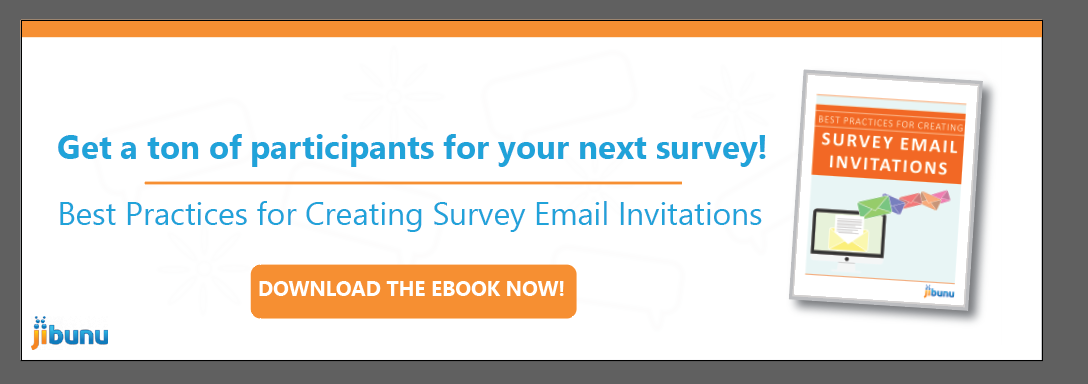Your main vehicle for obtaining survey participants will be your survey email invitation. In fact, it could be the deciding factor of whether your survey is successful, so give it due consideration and follow best practices if you want to get the best results.
Some best practices should be obvious: Use proper grammar and punctuation, send your email to the right lists, and comply with email marketing regulations. But there are a few other things you should consider before you hit “send.”
Avoid Spam Filters
To avoid spam filters, you’ll need to check a few boxes. For one, make sure your email is coming from a reputable email address, such as a company email address or the email address of an actual person. Avoid using words that trigger spam filters, like “free” and “cash,” or symbols like “$$$” and “!!!”.
If your email is heavy on HTML but light on text, it could also be marked as spam. Make sure your email has more text than HTML if you intend to design it. Also, ensure it’s coded properly. Emails with sloppy code are often marked as spam.
You should also check if your mail server has been blacklisted. This has to do with your email sending reputation. If you’ve followed best practices in the past, you probably won’t have anything to worry about. But it’s always a good idea to check.
Give Them a Good Reason to Open the Email
Once your email is in one of your recipient’s inboxes, you’ll need to give them a good reason to open it. Most people get dozens, if not hundreds of emails every day. It may be tempting to do something dramatic to get attention, but being smart, persuasive, or fun will be much more effective.
The subject line and preview text of your email, as well as who the email is from, are the three things that will determine whether your email gets clicked or trashed.
We’ve already discussed who your email should be from. Keep your subject line short, clear, and honest. Try to write 5 to 10 versions before you decide which is best, and get a second opinion.
In the preview text, it should be clear to your audience what the email pertains to and what they can expect when they open it. Use call to action language to make it more persuasive. Think of the preview text from your audience’s perspective. It should provide context for your email before they open it and help to build trust.
Keep it Clear and Simple
Once your email is opened, there should be a clear path towards your survey or survey sign-up. Don’t overload your email with unnecessary qualifications and jargon. Clearly state who you are, why you’re conducting the survey, and why they should participate. You can also include instructions for completing the survey.
If possible, use personalization to address the recipient by name. This makes your email feel less like a marketing ploy and more like a personal message. Keep your audience’s context in mind as well. A group of undergraduate students will respond to different language and images than a group of retirees.
If you’re designing your email with HTML, ensure it looks good on mobile devices. Send test emails to your team, conduct A/B tests, and identify the best version.
Offer an Incentive
Incentives are powerful tools for increasing your response rates. Typically, incentives can increase your survey response rate by 10-15%, according to PeoplePulse. But there are several different types of incentives to choose from, including:
- Cash
- Gift Cards and Gift Codes
- Discounts
- Raffles, Lotteries, and Sweepstakes
- Gift Items
- Donations to Charity
- Free Information
Cash comes with some inherent risks. Participants who only take surveys to get cash are less likely to care about their responses. This could lead to bad data. Nonetheless, even a small amount of cash is often a better incentive than all the others.
Gift cards and gift codes are perhaps the most popular. They’re a great way to provide a compelling incentive without taking on too much risk. However, if you’re surveying a business audience, they may be more interested in free information like original research or a white paper.
Ultimately, the best incentive for your survey email invitation will be the one that suits your participants. It might be that you don’t need an incentive at all.
Conclusion: Don’t Forget to Say Thanks
Finally, don’t forget to thank your audience for participating. They’re doing you a favor and taking time out of their day to complete your survey. If some of your participants start the survey but don’t complete it, make sure you send follow-up emails to remind them.
It can’t be overstated: Your survey email invitation is a crucial element for the success of your research. For more information about the best practices of survey email invitations, download our free guide.

